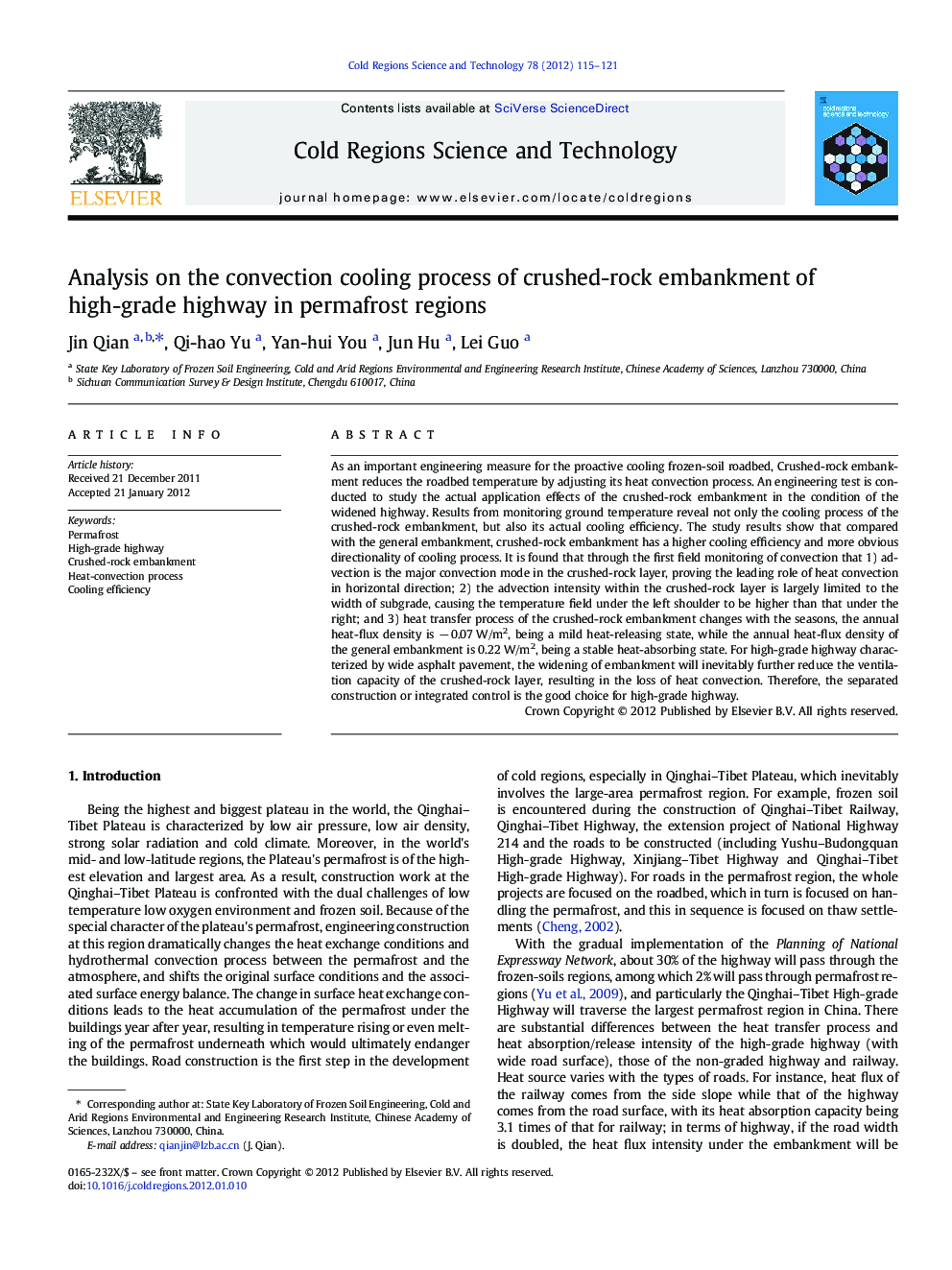| Article ID | Journal | Published Year | Pages | File Type |
|---|---|---|---|---|
| 4676001 | Cold Regions Science and Technology | 2012 | 7 Pages |
As an important engineering measure for the proactive cooling frozen-soil roadbed, Crushed-rock embankment reduces the roadbed temperature by adjusting its heat convection process. An engineering test is conducted to study the actual application effects of the crushed-rock embankment in the condition of the widened highway. Results from monitoring ground temperature reveal not only the cooling process of the crushed-rock embankment, but also its actual cooling efficiency. The study results show that compared with the general embankment, crushed-rock embankment has a higher cooling efficiency and more obvious directionality of cooling process. It is found that through the first field monitoring of convection that 1) advection is the major convection mode in the crushed-rock layer, proving the leading role of heat convection in horizontal direction; 2) the advection intensity within the crushed-rock layer is largely limited to the width of subgrade, causing the temperature field under the left shoulder to be higher than that under the right; and 3) heat transfer process of the crushed-rock embankment changes with the seasons, the annual heat-flux density is − 0.07 W/m2, being a mild heat-releasing state, while the annual heat-flux density of the general embankment is 0.22 W/m2, being a stable heat-absorbing state. For high-grade highway characterized by wide asphalt pavement, the widening of embankment will inevitably further reduce the ventilation capacity of the crushed-rock layer, resulting in the loss of heat convection. Therefore, the separated construction or integrated control is the good choice for high-grade highway.
► The crushed-rock embankment is suggested for Qinghai–Tibet freeway. ► The convection velocity is got for the first time by measurement in test embankment. ► The asymmetric temperature is basically caused by the single wind direction in winter and the strong horizontal convection.
